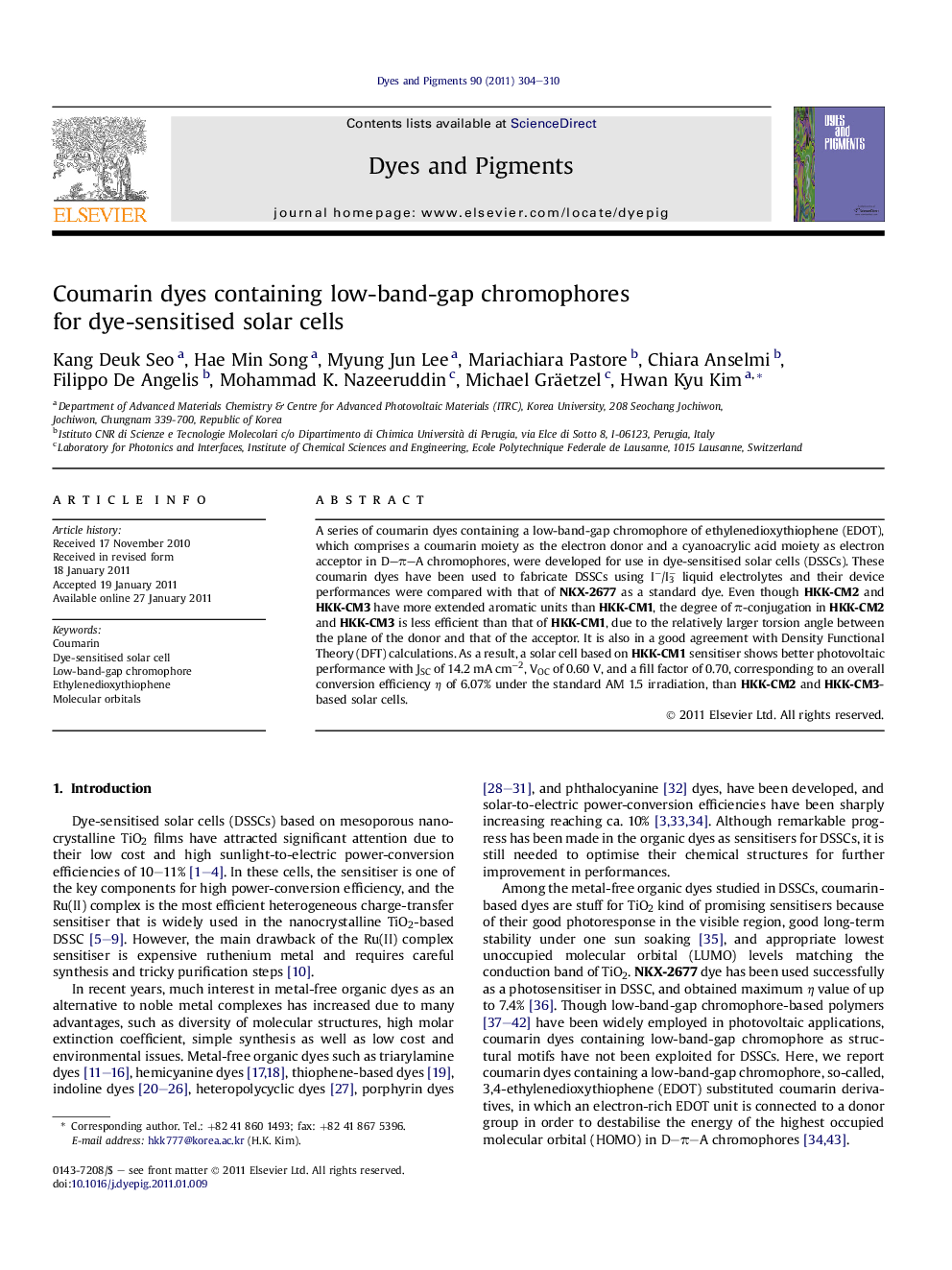| کد مقاله | کد نشریه | سال انتشار | مقاله انگلیسی | نسخه تمام متن |
|---|---|---|---|---|
| 177100 | 458964 | 2011 | 7 صفحه PDF | دانلود رایگان |

A series of coumarin dyes containing a low-band-gap chromophore of ethylenedioxythiophene (EDOT), which comprises a coumarin moiety as the electron donor and a cyanoacrylic acid moiety as electron acceptor in D–π–A chromophores, were developed for use in dye-sensitised solar cells (DSSCs). These coumarin dyes have been used to fabricate DSSCs using I−/I3− liquid electrolytes and their device performances were compared with that of NKX-2677 as a standard dye. Even though HKK-CM2 and HKK-CM3 have more extended aromatic units than HKK-CM1, the degree of π-conjugation in HKK-CM2 and HKK-CM3 is less efficient than that of HKK-CM1, due to the relatively larger torsion angle between the plane of the donor and that of the acceptor. It is also in a good agreement with Density Functional Theory (DFT) calculations. As a result, a solar cell based on HKK-CM1 sensitiser shows better photovoltaic performance with JSC of 14.2 mA cm−2, VOC of 0.60 V, and a fill factor of 0.70, corresponding to an overall conversion efficiency η of 6.07% under the standard AM 1.5 irradiation, than HKK-CM2 and HKK-CM3-based solar cells.
Figure optionsDownload as PowerPoint slideResearch highlights
► A series of coumarin dyes containing a low-band-gap chromophore (ethylenedioxythiophene), which comprises a coumarin moiety as the electron donor and a cyanoacrylic acid moiety as the electron acceptor in D–π–A chromophores, were developed for use in dye-sensitised solar cells.
► Even though HKK-CM2 and HKK-CM3 have more extended aromatic units than HKK-CM1, the degree of π-conjugation in HKK-CM2 and HKK-CM3 is less efficient than that of HKK-CM1, due to the relatively larger torsion angle between the plane of the donor and that of the acceptor.
► As a result, a solar cell based on HKK-CM1 sensitiser shows better photovoltaic performance with JSC of 14.2 mA cm−2, VOC of 0.60 V, and a fill factor of 0.70, corresponding to an overall conversion efficiency η of 6.07% under standard AM 1.5 irradiation, than HKK-CM2 and HKK-CM3-based solar cells.
Journal: Dyes and Pigments - Volume 90, Issue 3, September 2011, Pages 304–310